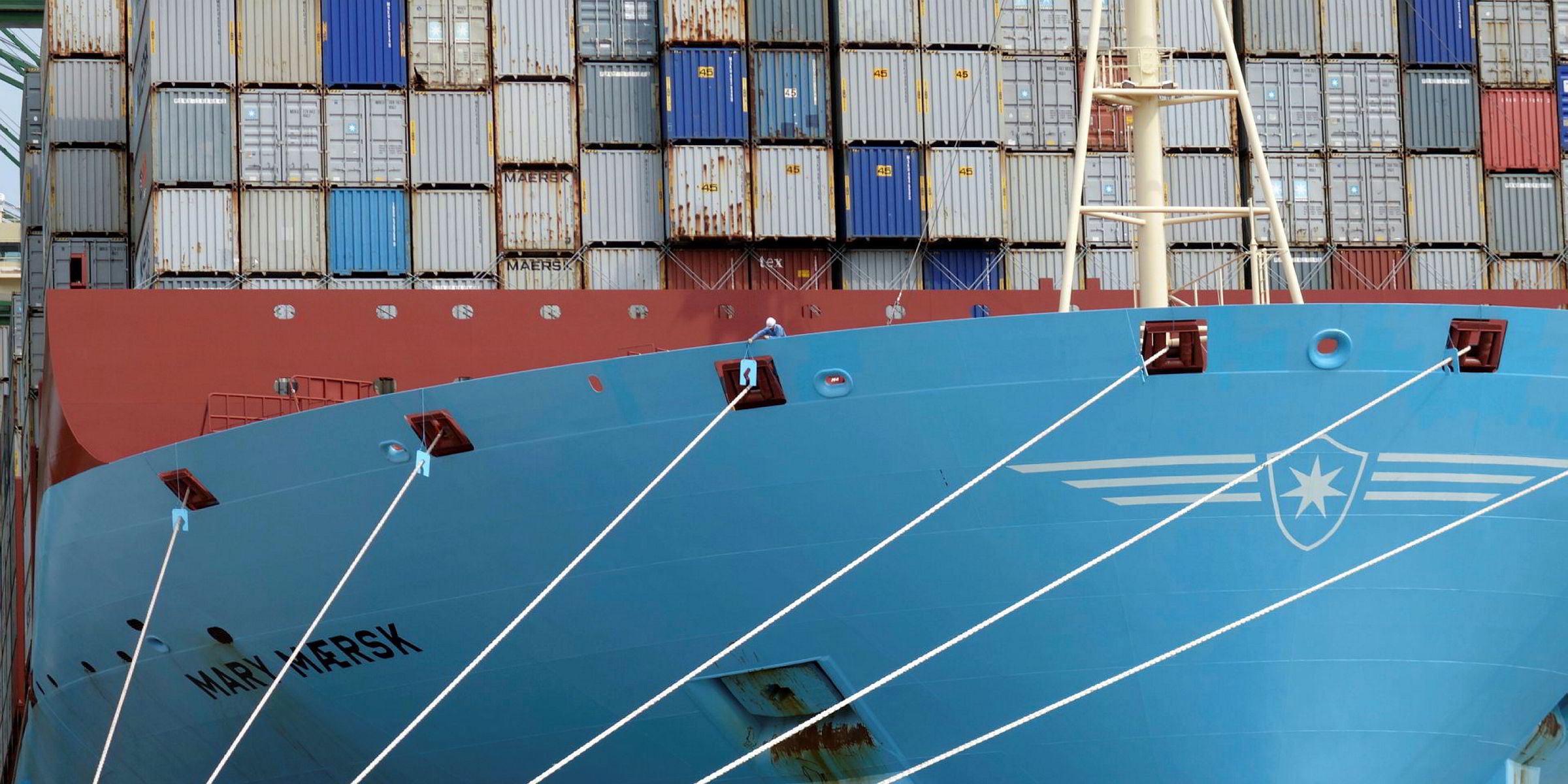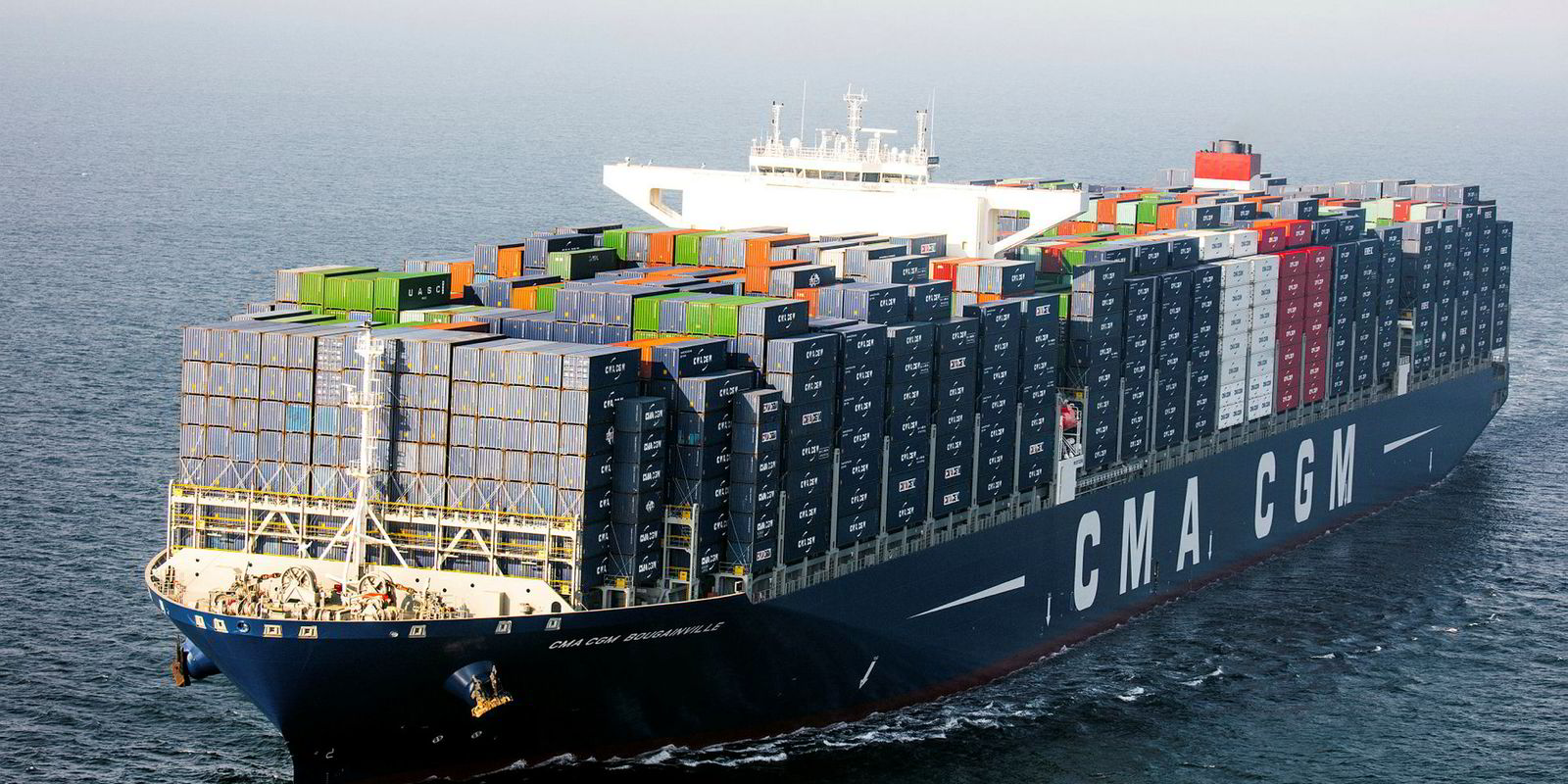Container lines appear divided on their approach to hefty bunker surcharges after shippers have reacted angrily to a move by Europe’s leading operators to implement the fees.
A leading shippers body deems the emergency charges to be introduced on 1 June by the top three liner operators as an “unwelcome legacy of the cartel era”.
Maersk Line, Mediterranean Shipping Co (MSC) and CMA CGM will introduce in June “emergency” fuel surcharges of between $100 and $120 per 40-foot container (feu), but these could be higher if fuel prices continue to rise.
If they are successful, the additional cash will help them through a period of low rates. Maersk Line's surcharge is enough to raise additional revenues of up to $1bn, said Jefferies International. It believes that is enough to largely compensate for the projected increase in the company'sbunker fuel cost of $1.2bn in the second half of 2018.
Containership operators need to ‘fess-up' by taking responsibility and greater control of their costs, rather than announcing vaguely explained short-notice unrecoverable surcharge costs on customers.
Meanwhile, there is little sign of Asian operators led by Cosco following the European lines and implementing their own surcharges. So far, neither Cosco, OOCL or Hapag-Lloyd have said they intend to implement a surcharge, amid speculation that they may be seeking to grab market share.
The lines blame an increase of between 20% and 30% since the start of the year to a four-year high of $440 per tonne.
The angry response from shippers makes it harder for other lines to implement surcharges.
Chris Welsh, secretary general of the Global Shippers Forum, deemed it an indictment on the liner shipping industry that a decade after the abolition of the liner conference system in October 2008, it is still using conference-style pricing methods to impose surcharges on its customers.
"Containership operators need to ‘fess-up' by taking responsibility and greater control of their costs, rather than announcing vaguely explained short-notice unrecoverable surcharge costs on customers,” he said.
Lines argue the surcharges are needed in spite of rising volumes and revenues, and Maersk Line says it is no longer possible to recover bunker costs through the standard bunker adjustment factor.
But container shipping analyst Lars Jensen is critical of the use by the Danish line of a flat-rate fee on containers irrespective of trade.
“With these 'emergency' actions, we seem to be headed more in the direction of illogical short-term fixes and away from a more sustainable long-term solution,” he said.
Shippers citing a lack of transparency also question why an emergency surcharge is warranted on top of existing bunker surcharge mechanisms.
"The use of emergency surcharges is a none too subtle attempt to impose non-negotiable charges on customers,” said Welsh. “The liner industry needs to employ more appropriate pricing arrangements, in conjunction with its customers, if it is serious about developing partnership approaches and improving individual customer-supplier relationships."
So far the emergency surcharges have had little impact on rates.
That seems likely to change as an additional $120 per feu on containers between East Coast North America to Europe means a 45% increase, putting prices at a 52-week high, according to Freightos Baltic Indexes.
“If you’re exporting from US to Europe, your container costs are doubled by the surcharge,” said Freightos chief executive Zvi Schreiber.





